Proactive Customer Service Strategies to Replace Reactive Methods

You face a fast-changing customer service landscape where expectations keep rising. Proactive customer service means you anticipate customer needs before they become problems, while reactive customer service only responds after issues appear. Companies like Sobot lead with innovation and customer-centricity, helping you deliver seamless support. With 79% of companies now viewing customer experience as a revenue driver, a proactive approach becomes essential. The proactive vs reactive customer service debate is clear—Sobot AI empowers you to shift from reacting to anticipating, protecting your reputation and bottom line.
Proactive vs Reactive Customer Service
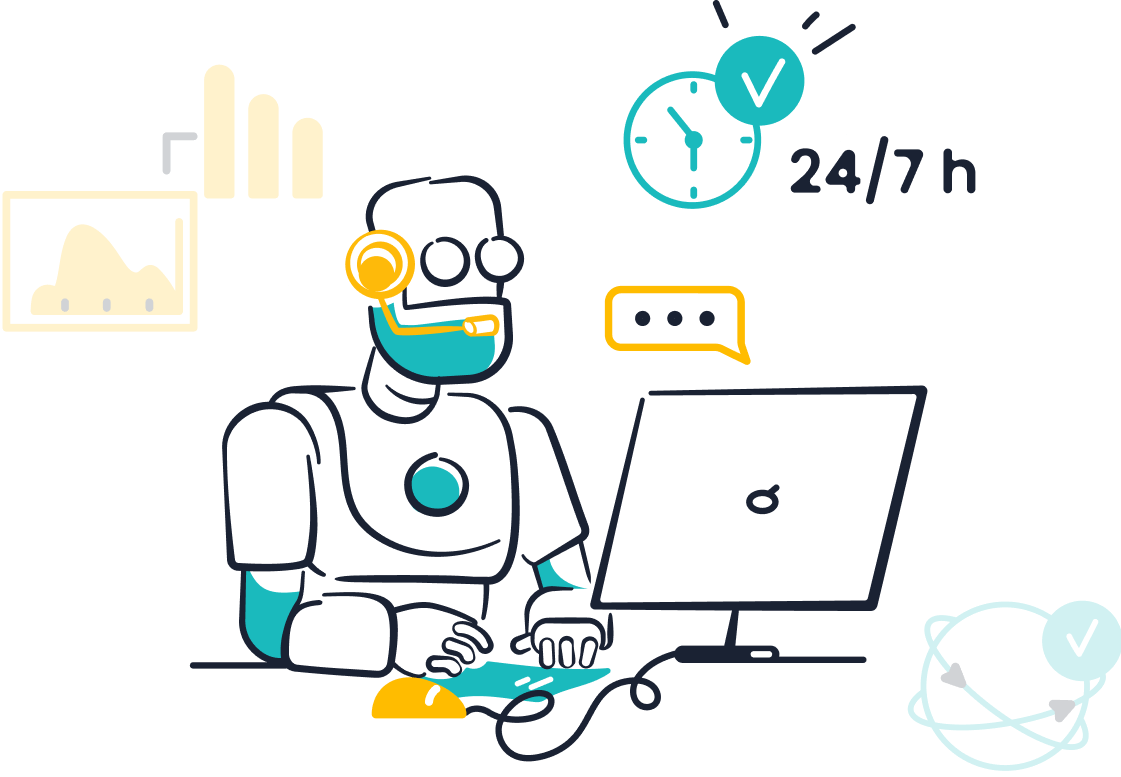
Definitions
You need to understand the basics of proactive vs reactive customer service to make the right choice for your business. Proactive customer service means you reach out to customers before they face problems. You use tools like Sobot’s AI chatbot to answer questions, send reminders, or offer help before customers even ask. Reactive customer service, on the other hand, waits for customers to report issues. You only respond after a problem appears. This approach often leads to longer wait times and more frustrated customers.
Key Differences
The proactive vs reactive customer service debate centers on how you handle customer needs. Proactive customer service focuses on prevention and anticipation. You use data, automation, and smart tools to solve issues before they grow. Reactive customer service responds to problems after they happen. You track ticket volume and agent performance to fix issues as they arise.
Here’s a quick comparison:
| Customer Service Method | Key Statistical Insights | Impact on Customer Satisfaction and Loyalty |
|---|---|---|
| Proactive Service | Only 13% of customers experience it; 92% of consumers appreciate proactive contact; over 85% want proactive communication | Yields a 1 percentage point increase in net promoter score, customer satisfaction score, customer effort score, and value enhancement score; linked to higher loyalty |
| Reactive Service | Majority of companies use this method; customers must initiate contact | Leads to increased customer effort, channel switching, higher costs, and negative effects on loyalty and profitability |
Metrics also set these methods apart. Proactive customer service uses CSAT, NPS, Rate of Automated Resolution, and Customer Lifetime Value to measure long-term gains. Reactive customer service tracks ticket trends and quality assurance scores to manage immediate issues. Proactive support can boost satisfaction by up to 25% and reduce inbound requests, while reactive support often means you play catch-up.
Common Pitfalls
You may face several pitfalls if you rely only on reactive customer service:
- You wait for customers to report issues, which causes delays and frustration.
- High ticket volumes can overwhelm your team, slowing down response times.
- You scramble to control damage, especially when complaints go public on social media.
- Your team feels burned out from always reacting instead of preventing problems.
- Recurring issues remain unsolved, leading to lower satisfaction and higher costs.
Tip: By shifting from reactive to proactive customer service, you can prevent these pitfalls and build stronger customer relationships. Sobot’s omnichannel solutions help you anticipate needs and deliver seamless support across every channel.
Why Proactive Customer Service Matters
Customer Expectations
You live in a world where customers expect fast, seamless support. Proactive customer service helps you meet these expectations by anticipating needs and solving problems before they grow. Today, 87% of customers want companies to reach out first when issues or opportunities arise. You see this in many industries:
- Telecom providers send outage alerts and personalized recommendations, which reduce frustration and call volumes.
- Airlines notify travelers about delays and offer rebooking, improving the customer experience.
- Retailers use automated tracking and personalized suggestions to boost sales and repeat purchases.
- Financial services alert clients about suspicious transactions and payment due dates, building trust.
- Healthcare providers send appointment reminders and medication alerts, increasing engagement.
Proactive customer service uses AI and automation to personalize interactions and offer self-service options. You can monitor customer behavior, anticipate needs, and train your team to act before problems escalate. This approach not only reduces customer effort but also strengthens customer relationships and loyalty.
Note: Sobot’s AI-powered chatbot and omnichannel solutions help you deliver proactive customer service by sending timely updates, reminders, and personalized messages across all channels.
Business Impact
Proactive customer service drives real business results. Companies that invest in this approach see higher customer satisfaction and improved operational efficiency. The following table highlights key statistics:
| Statistic | Business Impact |
|---|---|
| By 2025, 40% of customer service organizations will adopt proactive strategies (Gartner) | Anticipates needs, resolves issues early, and boosts revenue growth |
| 16% reduction in customer defections in financial services | Shows measurable financial benefit from better customer experience |
| Proactive interactions projected to outnumber reactive ones by 2025 | Reduces support needs and improves efficiency |
| CX investments in B2B yield higher retention and revenue | Proactive customer service drives long-term success |
| 87% of customers appreciate proactive solutions | Increases satisfaction and loyalty |
You gain a competitive edge when you move from reactive to proactive customer service. Proactive engagement reduces support tickets, builds trust, and turns satisfied customers into brand advocates. Sobot’s unified workspace and AI-driven insights help you identify demand drivers and deliver the right message at the right time, improving both customer experience and business outcomes.
Key Strategies for Proactive Customer Service
To build a successful customer support strategy, you need to move beyond reacting to problems. You must focus on anticipating customer needs and empowering customers at every stage. The following proactive strategies help you deliver proactive customer service, reduce customer effort, and create a seamless customer experience.
Customer Journey Mapping
Customer journey mapping gives you a clear view of every touchpoint your customers encounter. By visualizing the entire journey, you can spot gaps and take proactive measures before issues arise. This strategy helps you understand where customers struggle and where you can offer proactive support.
- 63% of marketers say journey maps help them identify experience gaps, leading to higher satisfaction.
- Businesses using journey maps see a 10-20% increase in customer satisfaction.
- Companies with formal journey management programs retain 55% of customers, compared to 21% without.
- 72% of businesses report better engagement across multiple touchpoints.
- Journey mapping reduces complaints and negative feedback by 15-20%.
Tip: Use Sobot’s omnichannel solution to track interactions across chat, email, voice, and social media. This unified workspace lets you monitor the journey in real time and deliver proactive outreach at the right moment.
Data-Driven Insights
Data-driven insights form the backbone of any effective customer support strategy. You can use real-time analytics to spot trends, predict issues, and take proactive measures. By analyzing customer behavior, you can personalize experiences and reduce customer effort.
- Retailers optimize inventory using sales data, ensuring products are always available.
- E-commerce brands use behavior data to personalize shopping and forecast demand.
- Real-time dashboards help you adjust strategies instantly, improving performance.
- Predictive models let you manage risks, such as supply chain disruptions.
- Financial analysis uncovers cost-saving and revenue growth opportunities.
Sobot’s AI-powered chatbot collects and analyzes customer data from every channel. You gain actionable insights that help you deliver proactive customer service and empower customers to solve issues quickly.
Predictive Analytics
Predictive analytics takes your customer support strategy to the next level. By leveraging AI, machine learning, and sentiment analysis, you can forecast customer needs and resolve issues before they escalate. This approach enables you to deliver proactive support and proactive outreach that keeps customers satisfied.
- Predictive analytics tools process feedback and behavior data to anticipate problems.
- Companies see operational efficiency improve by 20-30% and customer satisfaction scores rise by 10-15%.
- Avoidable support calls drop by 25-40%, and retention rates climb.
- Amazon uses predictive analytics to notify customers about shipping delays before they ask.
- Banks detect suspicious transactions in real time, reducing fraud and stress.
Note: Sobot’s chatbot uses predictive analytics to identify common questions and send proactive messages, reducing customer effort and improving the overall customer experience.
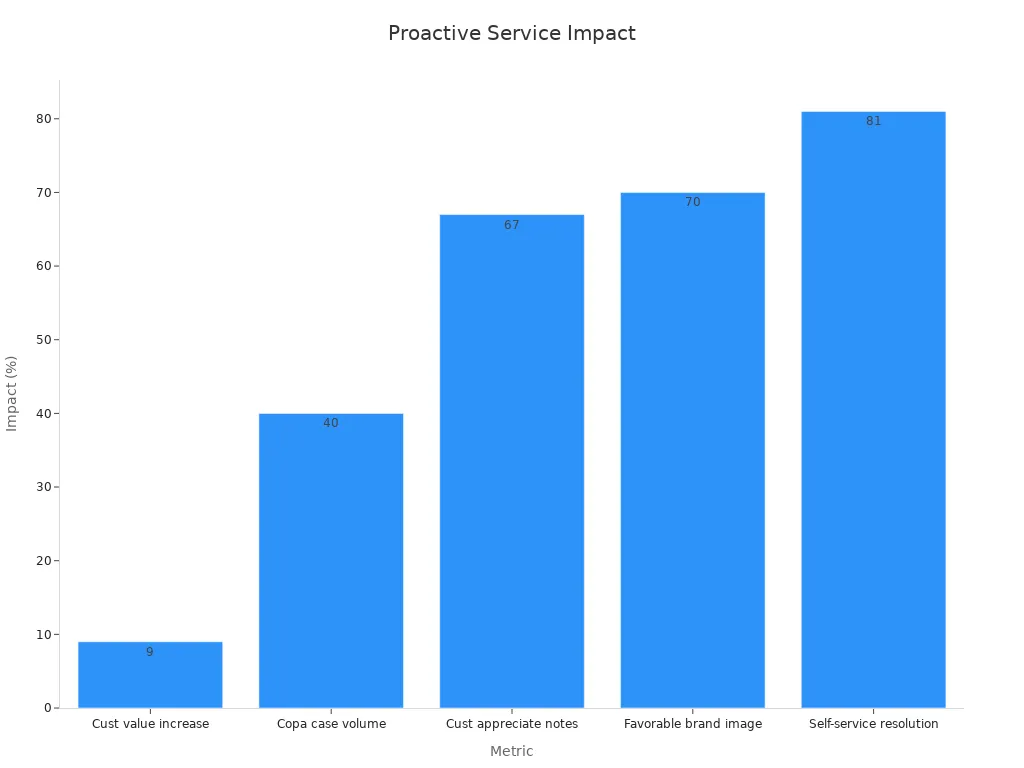
Proactive Communication
Proactive communication is essential for anticipating customer needs and delivering proactive outreach. You must reach out before customers encounter problems, using the right channel and message. This strategy reduces customer effort and builds trust.
- Higher customer satisfaction scores reflect improved experiences.
- Complaint volumes drop, especially for common issues like order status.
- Retention rates increase as customers feel valued.
- Lower labor hours spent on preventable inquiries save costs.
- A/B testing helps you refine your communication methods.
You can use Sobot’s omnichannel platform to automate reminders, send personalized updates, and deliver proactive support across chat, email, and messaging apps. This approach empowers customers and ensures they always feel informed.
Proactive customer service strategies—like journey mapping, data-driven insights, predictive analytics, and proactive communication—deliver measurable results. You see a 9% increase in customer value enhancement scores, a 40% reduction in support case volume, and 81% of customers resolving issues quickly through self-service. These proactive measures not only improve satisfaction but also lower operational costs and strengthen your brand image.
Sobot Chatbot Solutions
Automation and Self-Service
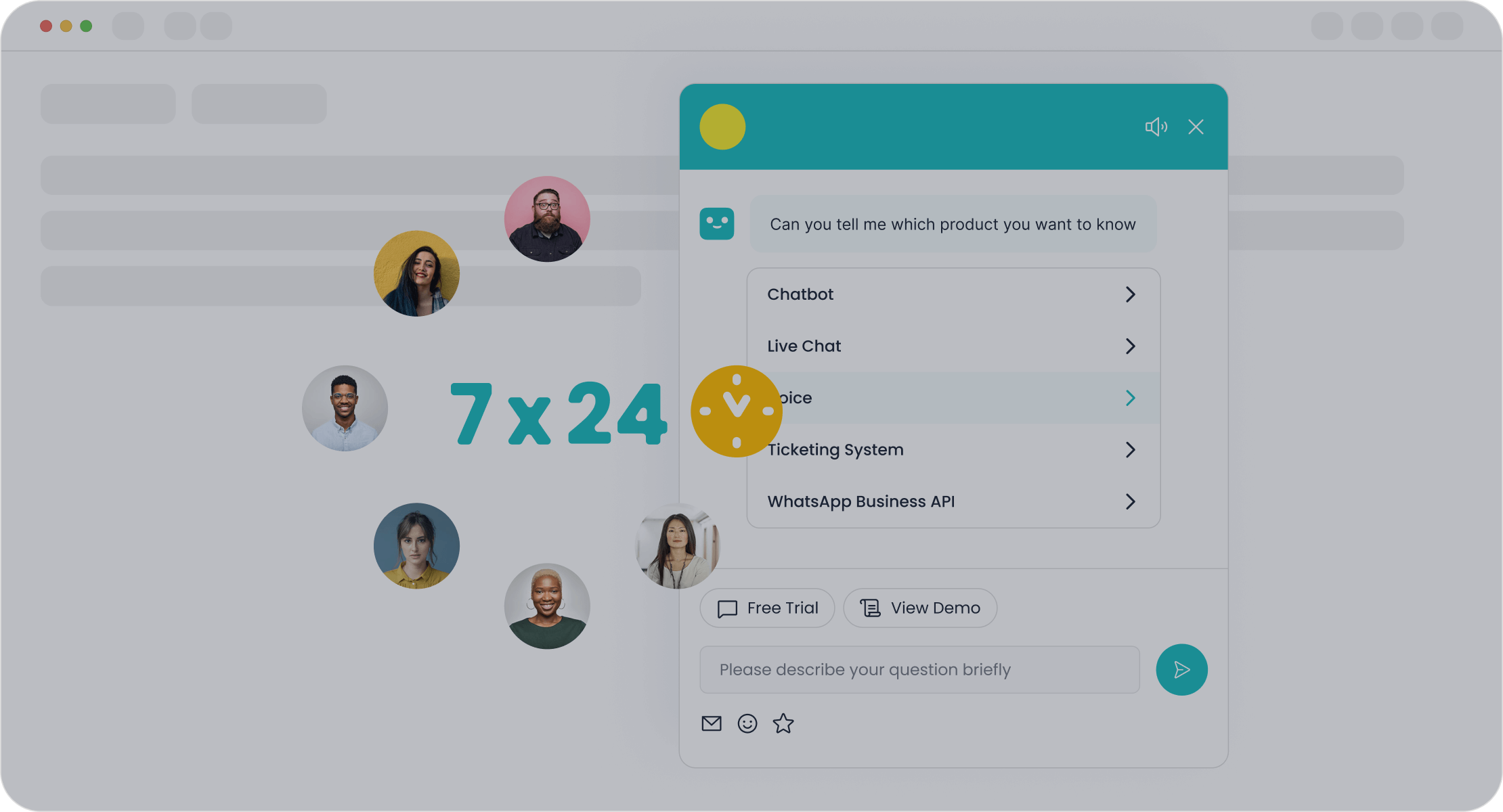
You can transform your customer service with Sobot’s automation and self-service features. The Sobot Chatbot delivers instant, accurate answers 24/7 across chat, email, voice, and social media. It uses advanced natural language processing and large language models like ChatGPT and Claude to improve resolution rates and reduce errors. The voicebot handles over half of customer interactions on its own, giving intelligent, human-like responses. This means your team can focus on complex issues while the chatbot manages routine questions.
- Sobot gathers context, predicts needs, and addresses common requests efficiently.
- Customers often praise the voicebot for solving problems without human help.
- You get omnichannel, multilingual, and multi-source knowledge interactions for a seamless experience.
- Sobot’s chatbot has a proven track record, trusted by tens of thousands of businesses for over a decade.
- Automation of 50% of support interactions leads to significant cost savings.
With Sobot, you offer proactive support and proactive assistance, making sure customers get help before they even ask.
Omnichannel Support
Sobot’s omnichannel platform brings all your customer conversations into one unified workspace. You no longer need to switch between tools or ask customers to repeat themselves. This approach speeds up issue resolution and improves the quality of your personalized support service.
- Omnichannel support consolidates all interactions, so agents see the full customer story.
- AI and automation handle simple queries instantly, freeing agents for more complex tasks.
- Customers enjoy quick responses and seamless transitions between channels.
- Higher customer satisfaction and net promoter scores show the value of this approach.
- Personalized support service becomes easier when you have all the information in one place.
You can use proactive communication to keep customers informed and engaged, building loyalty and trust.
Knowledge Base Optimization
Optimizing your knowledge base with Sobot Chatbot Solutions brings measurable improvements. The chatbot autonomously resolves common queries and assists agents, boosting productivity and reducing costs. You can see the impact in the table below:
| Performance Improvement Aspect | Observed Improvement |
|---|---|
| Productivity Increase | 70% increase by autonomously resolving common queries and assisting agents |
| Independent Resolution (Clearance) Rate | 62% clearance rate by the chatbot |
| Conversations Handled When Agents Unavailable | 73% of conversations managed by chatbot |
| Cost Savings | Up to 50% reduction in expenses by reducing need for extra agents |
| Conversion Rate Boost | 20% increase through data-driven customer engagement |
| Additional Benefits | 24/7 service availability, multilingual support, easy knowledge base optimization |
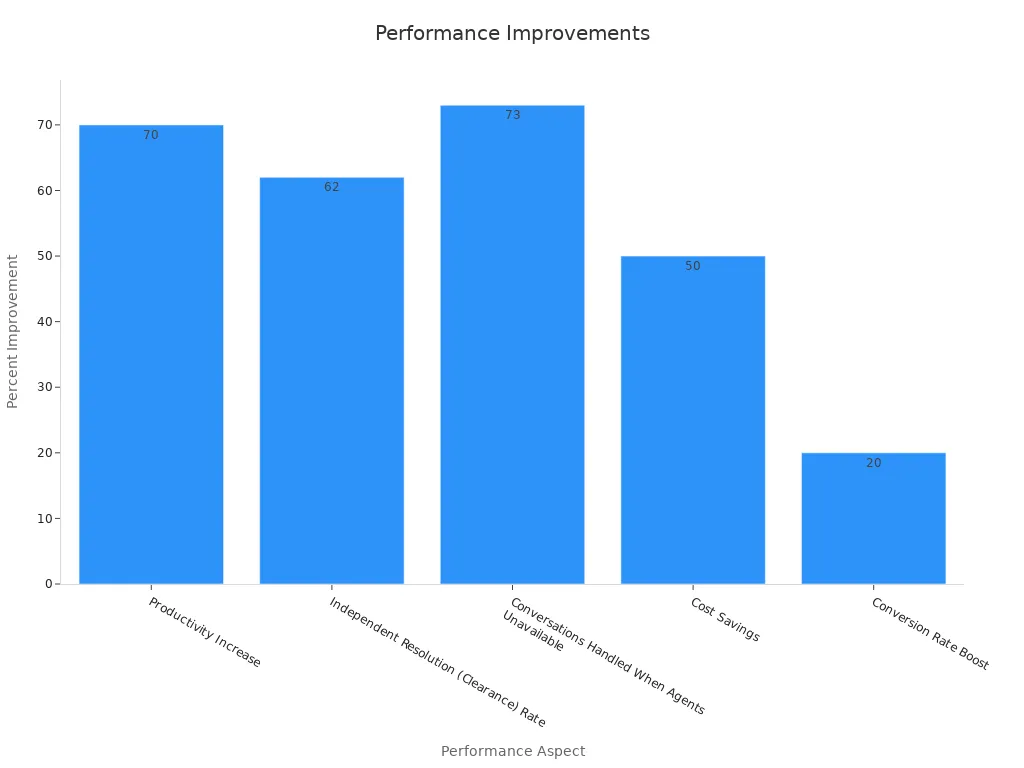
You empower your team to deliver proactive support and personalized support service at every step. Sobot’s easy-to-optimize knowledge base ensures your customers always find the answers they need.
Benefits of Proactive Customer Service

Customer Satisfaction
You can achieve higher customer satisfaction by adopting proactive customer service. When you reach out before issues arise, you show customers that you care about their needs. Studies using the Kano model reveal that customers see proactive features as must-haves, which means these features strongly influence satisfaction. In grocery retail, employees who initiate contact with customers boost satisfaction because customers notice the extra effort. According to a Statista survey, 66% of U.S. respondents feel more positive about brands that send proactive notifications. When you use Sobot’s AI-powered chatbot to provide instant answers and updates, you reduce customer effort and create personalized customer experiences. This approach leads to improved customer satisfaction, stronger customer relationships, and higher retention rates.
Proactive customer service helps you resolve issues at the first engagement, which can prevent up to 67% of customer churn. You build customer trust by addressing needs early and showing that you value every interaction.
Cost Reduction
Proactive customer service also helps you control costs and improve efficiency. By using automation and AI, you can handle routine requests and free your team to focus on complex problems. The table below shows how proactive strategies drive savings:
| Cost Reduction Aspect | Statistic / Description |
|---|---|
| AI chatbots handling support requests | 70% of requests managed by chatbots, reducing the need for extra agents |
| Contract renegotiation | Saves an average of 9.2% on total contract value |
| Software subscription optimization | Can reduce costs by up to 30% through auditing and license reuse |
| AI-driven automation in revenue cycle | Increases collection rates by 15-20%, improving payment timeliness and reducing errors |
| Profit concentration in repeat customers | 20% of customers generate 80% of profits, showing the value of retention |
When you use Sobot’s omnichannel solution, you streamline workflows and reduce unnecessary spending. This approach not only saves money but also supports customer retention and business growth.
Brand Loyalty
Proactive customer service plays a key role in building customer loyalty and increasing customer loyalty. When you anticipate needs and offer personalized service, you create trust and keep customers coming back. Metrics like the Customer Loyalty Index (CLI) and Net Promoter Score (NPS) show the impact. For example, NPS scores above 70 indicate very high loyalty. Personalized customer experiences and loyalty programs can boost repeat purchases, as seen with Starbucks Rewards’ 16% increase in active members. When you invite feedback and act on it, 77% of consumers view your brand more favorably. Sobot’s unified workspace helps you engage customers across channels, making it easier to foster retention and customer trust.
By reducing customer effort and focusing on proactive support, you strengthen customer relationships and set your brand apart in a crowded market.
Case Study: OPPO and Sobot
Challenges
You face many challenges when your business grows quickly. OPPO, a global leader in smart devices, saw a huge increase in customer inquiries during shopping festivals. Customers wanted fast answers about products, orders, and support. OPPO’s team struggled to keep up with the high volume. Long wait times led to frustration and lower customer satisfaction. The company also found it hard to maintain a large knowledge base for its many products. Agents spent too much time on repetitive questions, which hurt efficiency and made it difficult to focus on complex issues.
When your support team gets overwhelmed, you risk losing customer trust and lowering retention rates.
Solutions Implemented
You can solve these problems by using Sobot’s advanced solutions. OPPO chose Sobot’s AI-powered chatbot and ticketing system to automate responses and streamline workflows. The chatbot handled routine questions 24/7, freeing agents to help with more complex needs. Sobot’s platform unified all customer channels, so agents could see every interaction in one place. The knowledge base became easier to manage because Sobot’s AI automated the input of Q&A pairs. This reduced manual work by 90%. OPPO also integrated Sobot with its global business systems, making data easy to access and improving service speed.
- Sobot’s chatbot resolved common queries instantly.
- The unified workspace improved agent productivity.
- Automated knowledge base updates saved time and effort.
Results
You see real results when you use proactive customer service strategies. OPPO achieved an 83% chatbot resolution rate, which means most questions got solved without human help. Customer satisfaction soared, with a 94% positive feedback rate. The company saw a 57% increase in repurchase rate, showing stronger retention. Agents spent less time on repetitive tasks and more time on high-value support. OPPO’s story proves that Sobot’s solutions drive measurable improvements in efficiency, customer satisfaction, and retention.
| Metric | Before Sobot | After Sobot |
|---|---|---|
| Chatbot Resolution Rate | Low | 83% |
| Positive Feedback Rate | Moderate | 94% |
| Repurchase Rate | Average | +57% |
Sobot’s proactive approach helped OPPO deliver fast, reliable support and build lasting customer relationships.
Implementation Steps
Assess Current Processes
Start by evaluating your current customer support strategy. Use surveys, analytics software, and scorecards to collect quantitative data on performance. CRM systems and activity logs help you track customer satisfaction, engagement, and service outcomes. You can also apply frameworks like SERVQUAL or Analytical Kano to identify gaps and prioritize improvements. This data-driven approach gives you a clear view of where your customer service strategy stands and what needs attention.
Tip: Sobot’s unified workspace makes it easy to gather and analyze customer data from every channel, helping you spot trends and pain points quickly.
Set Goals
Define clear, measurable goals for your customer support strategy. Many companies use the OKR (Objectives and Key Results) framework, which aligns teams and drives results. OKRs help you set ambitious targets, track progress, and adjust as needed. Companies using OKRs report a 40% higher impact and better communication. You can also use the FAST framework, which emphasizes frequent review and transparency. Track metrics like CSAT, Customer Effort Score, and SLA performance to benchmark your progress.
- Set specific, realistic, and measurable goals.
- Review metrics regularly against milestones.
- Use technology and AI to analyze results and refine your strategy.
Train Teams
Equip your team with the right skills and tools. Training should focus on both technical and soft skills. Empower agents with AI-driven tools like Sobot’s chatbot and omnichannel platform. These tools help agents resolve issues faster and deliver higher quality support. Regular training sessions keep your team updated on best practices and new features.
Well-trained teams resolve problems quickly and provide a consistent customer experience.
Monitor and Improve
Track key metrics to measure the effectiveness of your customer service strategy. Focus on First Contact Resolution, CSAT, self-service resolution rate, and tickets closed per agent. Regularly review these metrics to identify areas for improvement. Use real-time monitoring to respond quickly to issues and adjust your approach.
| Actionable Steps for Integrating Sobot Solutions | Continuous Improvement Data Supporting the Steps |
|---|---|
| Omnichannel integration across online and offline channels | Unified customer data collection enabling seamless service and increased customer engagement (41%) |
| Upgrading digitalization, AI capabilities, and automation | AI-driven omnichannel support and intelligent workflows reduce manual intervention and improve efficiency |
| Personalized promotions and proactive notifications | Use of AI for predictive and personalized marketing campaigns, increasing conversion rates |
| Collecting and analyzing customer data in one place | Enables predictive support and personalized services, improving customer satisfaction and agent productivity (+34%) |
| Regularly collecting customer feedback | Enhances customer experience and loyalty, reflected in high Net Promoter Score (NPS) of 85 |
| Optimizing knowledge bases with machine learning | Reduces manual maintenance and improves accuracy of support information |
| Empowering agents through training and AI tools | Faster problem resolution and higher quality support, contributing to improved CSAT and operational efficiency |
Continuous improvement cycles ensure your customer support strategy adapts to changing needs and delivers lasting value.
You gain a real advantage when you adopt proactive customer service. You anticipate needs, reduce support costs, and boost customer satisfaction. Companies see results like higher conversion rates, fewer support tickets, and stronger loyalty.
- 73% of customers report a better brand experience when contacted proactively.
- Automated chatbots save companies billions and let teams focus on complex issues.
- Proactive outreach drives sales and keeps customers engaged.
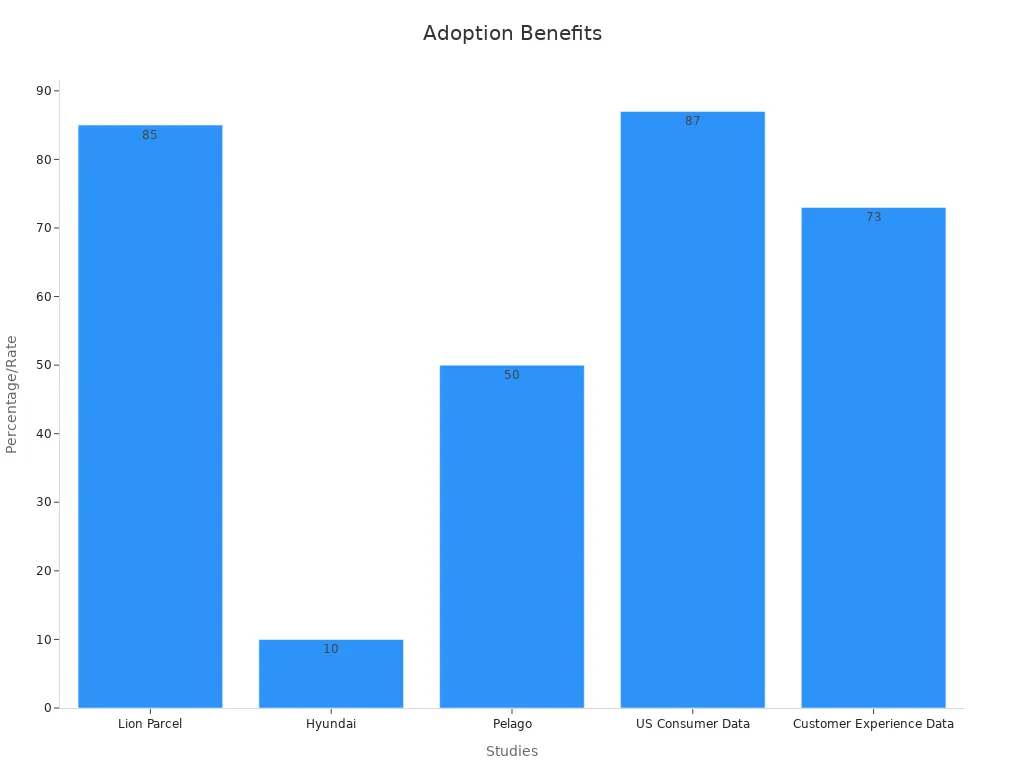
Sobot’s solutions help you deliver proactive customer service across every channel. Start your journey today and set your business apart with smarter support.
FAQ
What is proactive customer service, and why does it matter?
Proactive customer service means you solve problems before customers notice them. This approach increases satisfaction and loyalty. According to Gartner, 87% of customers appreciate proactive outreach. Sobot’s omnichannel solution helps you deliver proactive support across every channel.
How does Sobot Chatbot improve my customer support strategy?
Sobot Chatbot automates routine queries, provides 24/7 support, and offers multilingual service. You boost productivity by 70% and cut costs by up to 50%. The chatbot’s proactive messaging and real-time assistance help you deliver a personalized support service that keeps customers engaged.
Can I use proactive customer service with multiple channels?
Yes! Sobot’s omnichannel solution unifies chat, email, voice, and social media. You track every interaction in one workspace. This approach lets you deliver proactive customer service and a seamless personalized support service, no matter which channel your customers choose.
What results can I expect from using proactive customer service strategies?
You can expect higher customer satisfaction, lower support costs, and increased loyalty. For example, OPPO achieved an 83% chatbot resolution rate and a 94% positive feedback rate after using Sobot Chatbot and omnichannel solutions. Proactive customer service drives measurable business growth.
How do I start implementing a proactive customer support strategy?
Begin by mapping your customer journey, analyzing data, and setting clear goals. Train your team and use tools like Sobot Chatbot for automation. Monitor results and improve continuously. Proactive customer service and a strong customer support strategy set you apart from competitors.
Tip: Explore Sobot’s official website for more resources on proactive customer service and omnichannel solutions.
See Also
How AI Agents Are Transforming Customer Support Services
Effective Live Chat Techniques To Enhance SaaS Support
Top Strategies For Managing Quality In Call Centers
